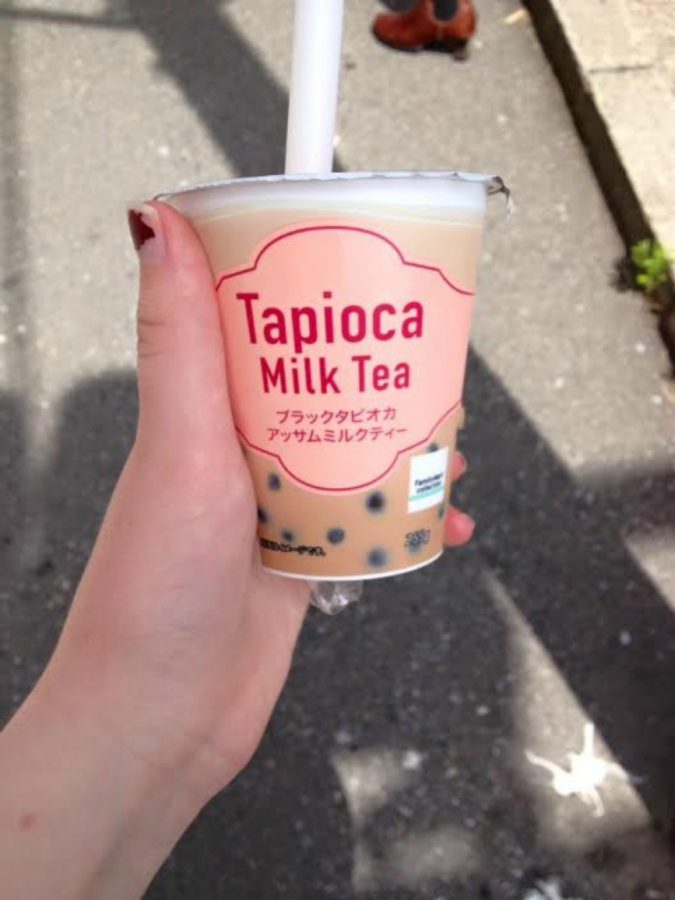Kaitan Sushi in Japan
August 26, 2016
As soon as school let out in June, I hopped on a plane headed for Tokyo. My mom and I were flying there to meet my sister, who had been studying abroad. After a 14 hour plane ride to Tokyo, another plane ride to Osaka, and a bus ride to Kyoto, my whole family was finally reunited in the city of shrines and temples.
We spent about a week in Kyoto, exploring the university where my sister studied, the imperial palace of Japan, and various other things from the day-to-day aspect of life in Japan. Something that was especially exciting were kombinis (convenience stores). While a 7/11 stop doesn’t really sound like a hot itinerary item, the food available in a kombini was a highlight of the trip.
First, there was my favorite breakfast: onigiri. Fish, surrounded by rice, wrapped in seaweed; this simple snack had the taste of sushi but the convenience of a walking taco. While they came in many flavors (salmon was my favorite), the labels at some kombini contained no English whatsoever, so snack time turned into a guessing game.
As for drinks, Japan has managed to bottle God’s tears and call it milk tea. Simply tea, milk, and a mysterious something else so powerful and tasty it has the power to end wars, this drink was my favorite thing about my morning walk from the hotel to the nearest kombini. Of course, I didn’t even need to walk that far: Japan is littered with drink machines. While I never saw a single food vending machine in the ten days I spent in the country, I could sneeze and hit about three drink machines. No, I’m serious. There was a drink machine in an ancient shrine. There was a drink machine on top of a mountain.
I cannot talk about visiting the country whose main diet is 75% fish and rice without talking about the most popular food item back in the States: sushi. Not only is it delicious, it’s just as fun and pretty as well. It its mother country, sushi was taken up a level.
Behind bamboo doors lays a kaitan (conveyor belt) sushi restaurant. Yes, this is exactly what it sounds like. A circular bar surrounded two sushi chefs who were chopping, slicing, and rolling away to make our lunch. Except for a “Welcome to our restaurant!” and a “Thank you for coming!” no words were spoken. Our food passed directly in front of our faces, ready for our taking. If we missed a turn, it would circle back in about three minutes. White plates meant plain nigiri, blue plates meant a wasabi surprise. Plates were stacked on plates as we ate our fill. The best part was the faucets at each setting that dispensed green tea. The sushi was almost exactly what we get at home, with the exception of one roll: the raw horsemeat. Eating Secretariat doesn’t carry the same taboo as it does in America, so yours truly got to taste what exactly Flicka tasted like. And it wasn’t a big deal. Sorry to tell you, but I couldn’t tell the difference between horse and roast beef.
Along with raw horse meat, I got to try a few other Japanese snacks that aren’t available in the US. Fried octopus, the official snack of Osaka; chicken in a bag (literally, fried chicken in a bag, smothered in the sauce of your choosing); potato chip-topped froyo; chocolate-covered pop rocks; coffee in a can; and straight-up kiwi juice (which available anywhere other than the plane from Tokyo to Osaka).
While I tearfully kissed my last milk tea goodbye before boarding the plane home, I thought back on all the things in Japan that have yet to come to America: milk tea (come ON, Starbucks would make a KILLING), kaitan sushi (take away the horsemeat, it becomes the next dining craze among millennials), onigiri (breakfast for those who don’t like breakfast). Also, appropriately-sized backpacks for children. But that’s another story.


